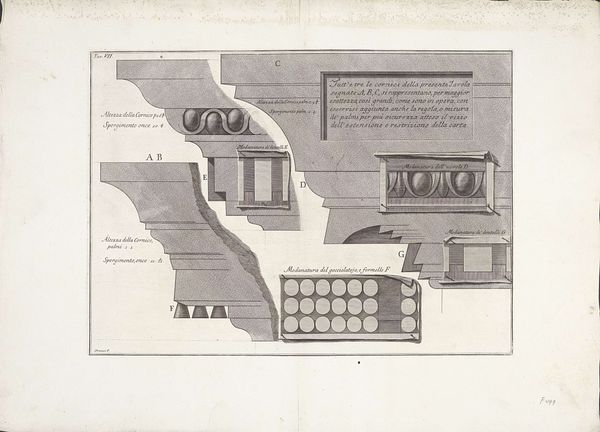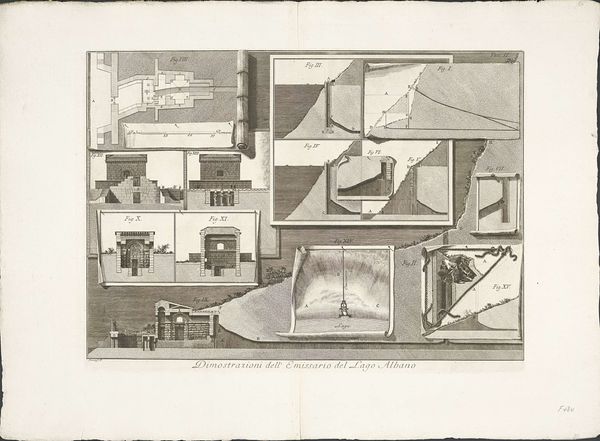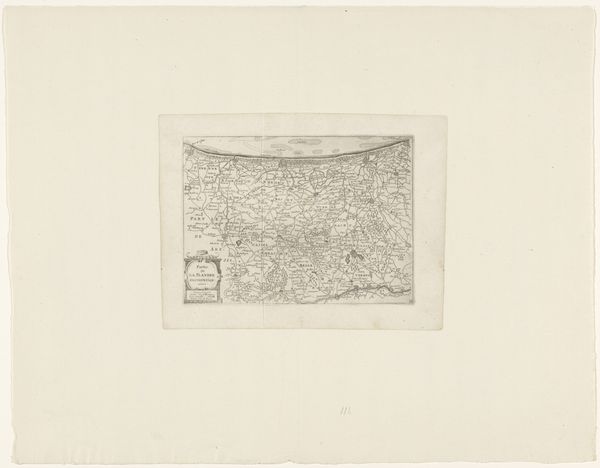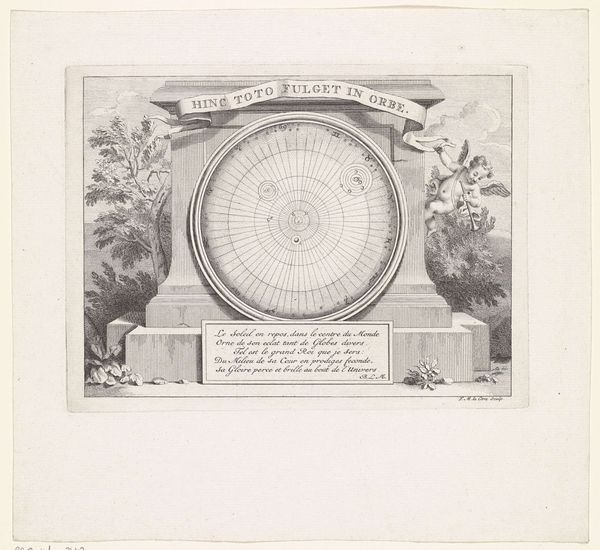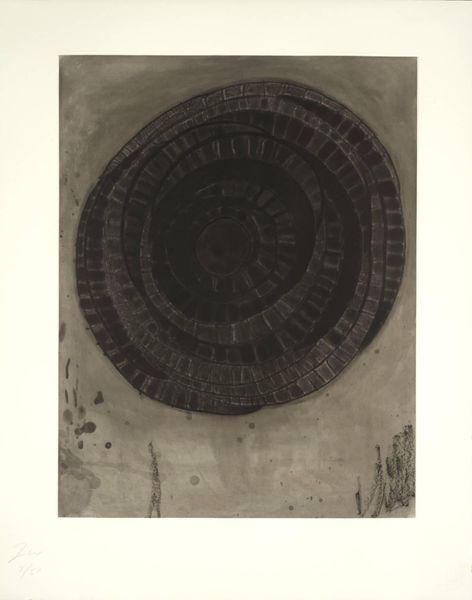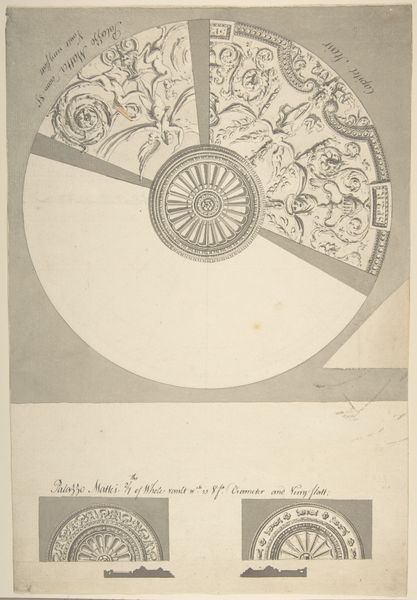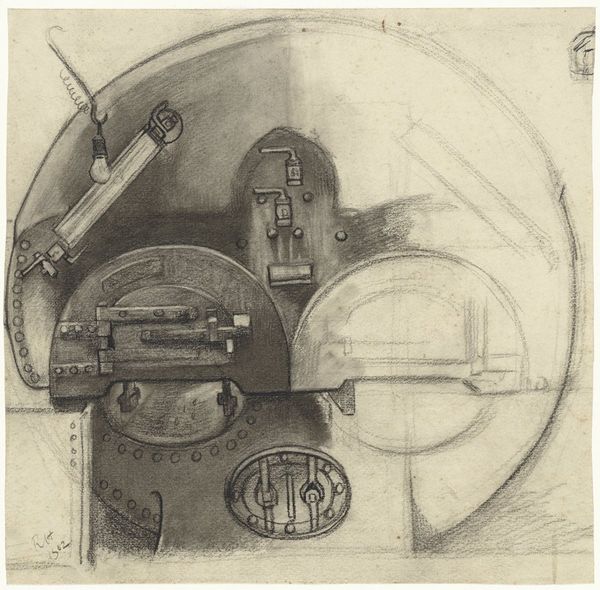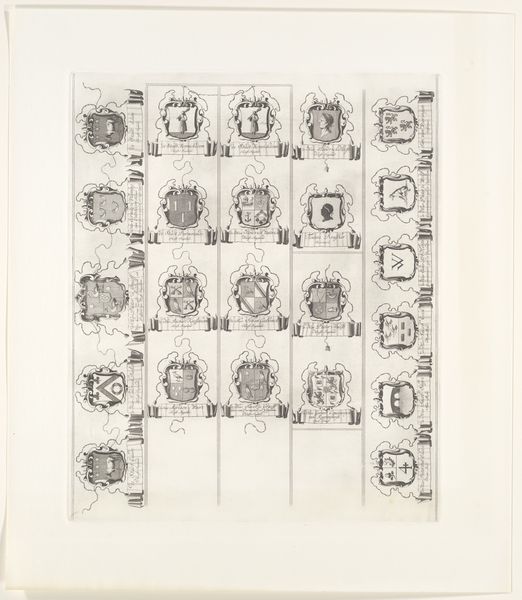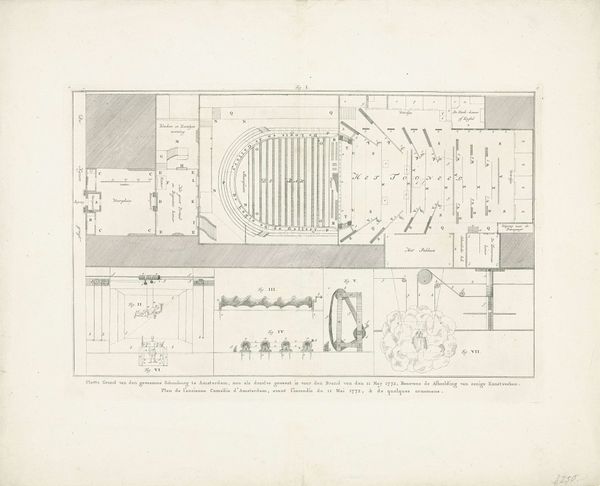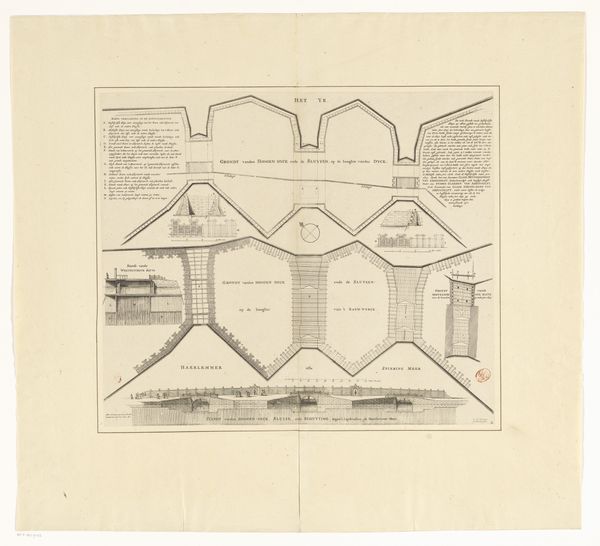
drawing, print, etching, engraving, architecture
#
drawing
# print
#
etching
#
landscape
#
geometric
#
italian-renaissance
#
engraving
#
architecture
Dimensions: height 356 mm, width 525 mm
Copyright: Rijks Museum: Open Domain
Editor: This is Giovanni Battista Piranesi's "Amfitheater van Domitianus" from 1764. It's an etching, part of a series of prints. What strikes me is its clinical precision, almost like an architectural blueprint, yet romantic in its decay. What do you see in this image? Curator: What I see is a statement about the role of antiquity in the 18th century. Piranesi wasn’t simply documenting Roman ruins; he was actively reconstructing a vision of Roman grandeur, shaping public perception. Notice the stark contrast he creates between the idealized plan and the fragmented details. What do you think this contrast might signify? Editor: Perhaps he's commenting on the impermanence of empires, the inevitable decline from glory? Or is he more focused on preserving this heritage? Curator: Exactly! It’s a tension between elegy and aspiration. These prints were commodities, meant for consumption by wealthy Europeans on the Grand Tour. They wanted souvenirs, but also to feel connected to this glorious past. So Piranesi is catering to a market while subtly engaging in a discourse about cultural identity. He's asking, "What does Rome mean to us now?" It is interesting that he produced works during the Italian Renaissance period? Editor: Very interesting! I had thought that since the piece focused on antiquity it wouldn't be Renaissance related. So, Piranesi used a historic subject to fuel contemporary, and political dialogues of his time? Curator: Precisely! And that's where the power lies: not just in the image itself, but in its cultural and socio-political reverberations. It demonstrates how the past is constantly re-interpreted and repurposed to serve the present. Editor: Wow, that gives me a totally different perspective on these seemingly straightforward architectural prints! It's not just about what is shown, but about what the artist, and the consumer, want it to mean.
Comments
No comments
Be the first to comment and join the conversation on the ultimate creative platform.
